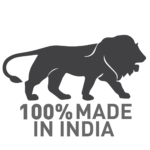Starting a food cart business can be an exciting venture, but the success of your endeavor hinges on choosing the right food cart. The perfect food cart not only reflects your brand and menu but also meets practical needs such as mobility, storage, and compliance with health and safety regulations. In this guide, we’ll walk you through the essential considerations to help you make an informed decision and set your food cart business up for success.
Find the Best Food Cart for Your Business: Key Considerations
Define Your Concept and Menu:
Before diving into the world of food carts, clearly define your business concept and menu. Consider the type of cuisine you want to offer, your target audience, and your unique selling points. Understanding your concept will guide you in choosing a food cart that aligns with your brand and operational needs.
Mobility and Location:
One of the primary advantages of a food cart business is mobility. Consider the locations where you plan to operate and choose a food cart that is easily transportable and fits the space requirements of those locations. Look for features like sturdy wheels, compact design, and lightweight materials that will make it easy to move your cart around.
Size and Layout:
The size and layout of your food cart should be optimized for efficiency. Ensure that it provides enough space for food preparation, storage, and customer service. Consider the number of staff members who will be working inside the cart and the equipment needed for your menu. A well-organized layout contributes to a smooth workflow and faster service.
Compliance with Health and Safety Standards:
Food safety is non-negotiable in the food industry. Choose a food cart that complies with health and safety regulations in your area. Look for carts with easy-to-clean surfaces, proper ventilation, and sufficient space for handwashing and sanitation. Compliance with these standards not only ensures the well-being of your customers but also protects your food cart business from legal issues.
Quality of Materials:
Invest in a food cart made from durable and food-grade materials. Stainless steel is a popular choice for its durability, resistance to corrosion, and ease of cleaning. Consider the quality of the wheels, frame, and other components to ensure longevity. A well-built cart will save you money in the long run by reducing maintenance costs and prolonging the life of your investment.
Budget Considerations:
Determine your budget for the food cart, including any customization or additional features you may need. While it’s essential to stay within your budget, remember that the quality of the food cart is a critical factor in your business’s success. A slightly higher initial investment in a high-quality food cart can pay off in terms of durability, efficiency, and customer satisfaction.
Customization Options:
Depending on your concept, you may require specific customization options for your food cart. Consider features such as built-in refrigeration, display areas, and branding opportunities. Some manufacturers offer customizable designs that allow you to tailor the cart to your specific needs and brand image.
Choosing Between a Food Cart and a Food POD
In the evolving landscape of mobile food businesses, deciding between a traditional food cart and a modern Food POD can be both exciting and challenging. Food carts excel in mobility and simplicity, making them a popular choice for many entrepreneurs. However, Food PODs bring added advantages such as enhanced convenience, better operational flexibility, and an elevated customer experience.
HungryWheels Food PODs redefine mobile food solutions by offering a unique blend of sustainability, safety, and support. These innovative PODs boast features like zero emissions, a family-friendly design, government compliance, adaptable financing options, and comprehensive insurance. Designed with the needs of modern vendors in mind, they set a new standard for efficiency and eco-consciousness in the mobile dining industry.
Curious to learn more about how HungryWheels’ eco-friendly Food PODs can revolutionize your mobile food business? Reach out to us today and take the first step toward a sustainable and thriving mobile dining experience!
FAQ: How to Choose the Right Food Cart for Your Business
1. Why is choosing the right food cart important for my business?
Selecting the right food cart is crucial as it directly impacts the efficiency of your operations, compliance with health standards, and overall customer satisfaction. A well-chosen cart can enhance your brand image and contribute to the success of your food cart business.
2. How do I determine the ideal size and layout for my food cart?
Consider the menu items you plan to offer, the equipment needed, and the number of staff members working inside the cart. A well-organized layout ensures a smooth workflow, while the size should be optimized for both operation and mobility.
3. What features should I look for to ensure mobility and easy transportation?
Look for sturdy wheels, a compact design, and lightweight materials. These features will make it easier to move your food cart to different locations, expanding your business reach.
4. How do I ensure my food cart complies with health and safety standards?
Choose a cart with surfaces that are easy to clean, proper ventilation, and ample space for handwashing and sanitation. Make sure the food cart aligns with local health and safety regulations to prevent legal issues.
5. What materials are best for a food cart?
Stainless steel is a popular choice due to its durability, resistance to corrosion, and easy cleaning. Ensure the overall build quality, including the frame and wheels, meets your standards for longevity and reliability.
6. How can I stay within my budget when selecting a food cart?
While it’s important to have a budget, prioritize quality to avoid higher maintenance costs in the long run. Consider the value and durability of the food cart as a crucial factor in your investment.
7. Are there customization options available for food carts?
Yes, many Food cart manufacturers offer customization options. Consider features such as built-in refrigeration, display areas, and branding opportunities to tailor the cart to your specific business needs and brand image.
8. How can I ensure my food cart reflects my business concept?
Clearly define your concept and menu before selecting a food cart. Ensure the design and features align with your brand, target audience, and unique selling points.
9. What are some signs of a well-built food cart?
A well-built food cart will have a sturdy frame, high-quality materials, and attention to detail in design. It should also meet health and safety standards and offer features that enhance efficiency.
10. Can I get assistance with the customization of my food cart?
Yes, many food cart manufacturers provide customization services. Work closely with the manufacturer to communicate your specific needs and preferences to ensure the food cart meets your business requirements.
Final Thoughts on Building a Successful Food Cart Business:
Choosing the right food cart is a crucial step in launching a successful food cart business. By carefully considering your concept, mobility needs, compliance with regulations, quality of materials, budget, and customization options, you can make an informed decision that aligns with your business goals. With the right food cart, you’ll be well on your way to delivering delicious meals and building a loyal customer base. Good luck on your food cart business venture!

Mobility architect, system designer, and ecosystem builder.
Since 2012, he has developed various scalable vehicle platforms and solutions for retail, logistics, and defence. As a possibilist, futurist, and innovator, Vikram’s designs have powered the success of Food POD mobile kitchens at ITC Hotels, TAJ Hotels/ Qmin, WAGSHA/ Manipal Group, Wonderla and more.

















